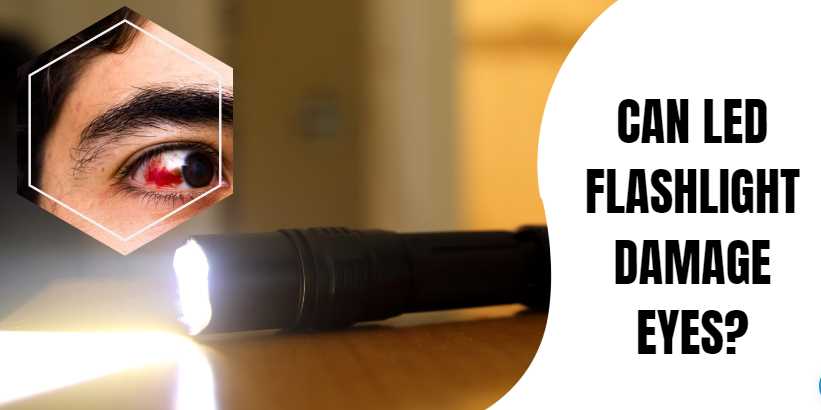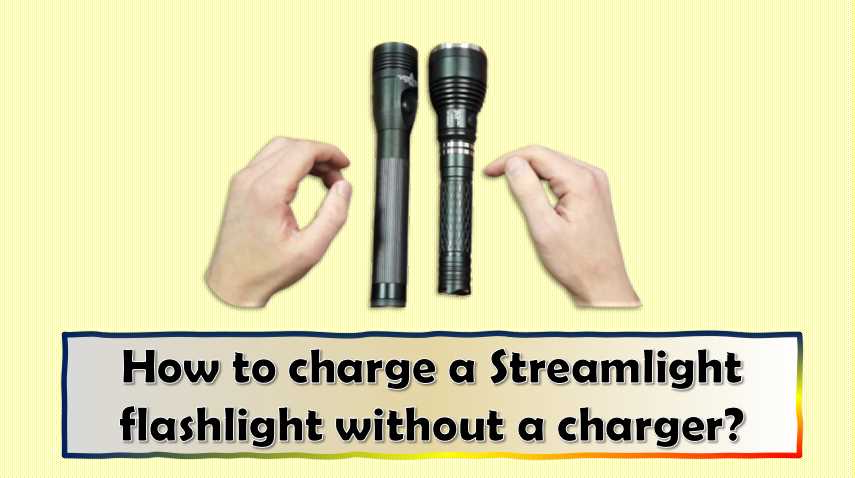If you’re looking for a quick and easy guide to understanding how flashlights work, then you’ll want to check out our complete guide for beginners. This article will describe the basic anatomy of a flashlight, discuss the different types of LED lights used in flashlights, and provide tips on choosing the best flashlight for your needs.
We also have an accompanying infographic that will help illustrate these concepts further. So read through our guide if you are new to using flashlights or need some clarification on specific details!
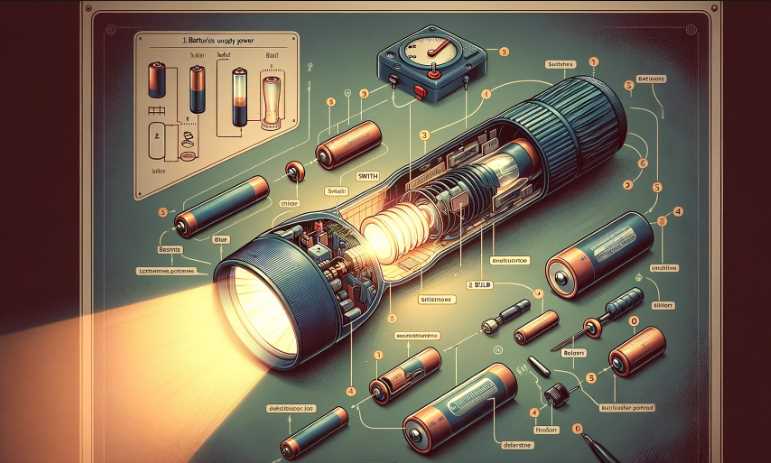
What are the different parts of a flashlight?
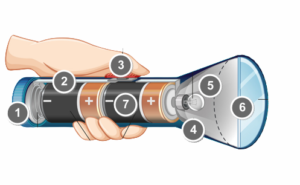
Having a flashlight is always a handy thing to have around, and not just for emergencies. If you’re a beginner in the flashlight world, here are the basics you need to know. A flashlight consists of three main parts: the head, the bulb, and the chain or handle. The chain or handle attaches to your hand so you can hold it while walking around in dark places. The head is where you put your light source – a LED (light-emitting diode) panel or an incandescent bulb. The bulb contains a light source and has a switch that lets you turn it on and off. So, there you have it – a complete guide to flashlight basics for beginners!
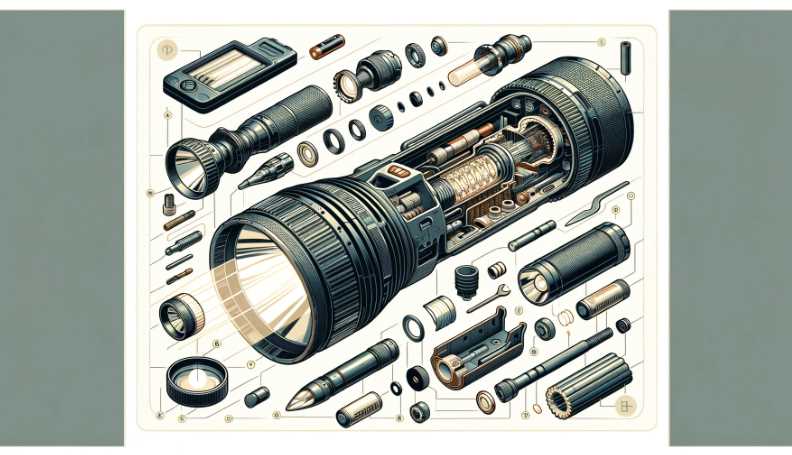
The flashlight Case is the flashlight part that holds all the different pieces together and protects them from damage. It can include a tube that houses the batteries, a lamp (light bulb), and mechanisms to keep everything secure.
Contacts in a flashlight are thin strips of metal that make the electrical connection between the various parts of the light. This is necessary because electric lights create an electronic current; without contacts, there wouldn’t be a way to send this current through wires to produce light.
Most modern flashlights use silver or gold contacts because they have a high resistance to corrosion and don’t rust over time as other metals might. Additionally, these metals allow for more accurate color reproduction than traditional materials like brass or bronze.
The switch in a flashlight is an electronic component that allows you to turn the light on or off. When the switch is in the ON position, electricity flows through it and produces light. The flow of electricity is broken when the button is moved out of the ON position, preventing any further light from being created.
Reflectors are a standard feature on flashlights and are used to create a consistent light beam. This is important for two reasons: first, it allows you to use the same flashlight with different batteries without adjusting the brightness; second, it will enable you to aim your flashlight in any direction without missing anything.
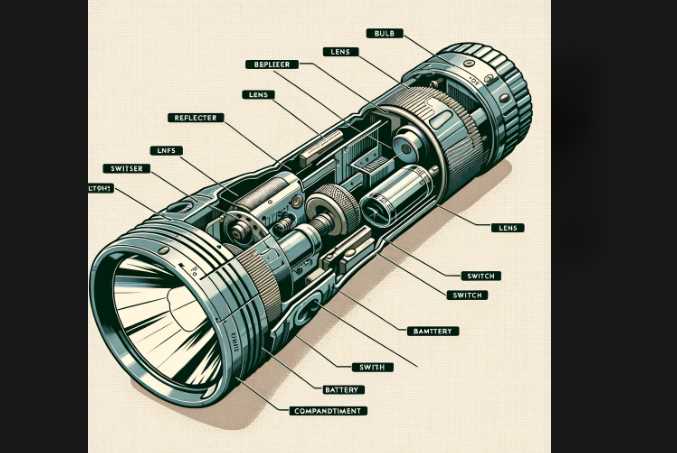
A flashlight’s light bulb (Lamp) is usually either a tungsten filament or LED. A typical incandescent light bulb has an inner filament that is heated until it becomes hot enough to burn gas. Then this heat vaporizes the liquid mercury (filament) from inside the tube. The xenon gas formed as a result begins to liquefy (turn into the gaseous form), and because it does not support oxygen atoms very well, due to its high electron content, it forms “Xenon Arc,” which gives off bright white light.
LEDs are similar in principle, but instead of using electricity to generate heat, they use electric current running through semiconductor materials such as amorphous silicon strips or thin-film transistors. This causes small puddles of electrons—called “holes”–to be created at specific points on these materials where they can collect photons more quickly than anywhere else on the material’s surface. These holes get so numerous that there’s no visible arc anymore, even when you shine a powerful searchlight onto them (hence their name – Light Emitting Diode).
The lens in a flashlight is the lighted end or focuser, and it helps to project an image of what’s being looked at onto a wall, ceiling, or other surfaces. This allows you to see things clearly during nighttime walks or while camping.
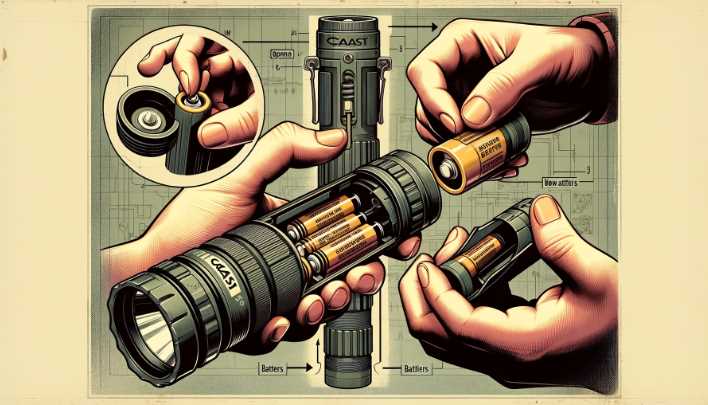
Batteries are usually activated by a switch on the side or rear of the flashlight, and these switches are often made from rubber to provide a comfortable grip. Either disposable batteries or an internal rechargeable battery typically powers a flashlight.
Disposable batteries are found in several flashlights, including pen-style and headlamp flashlights.
When using disposable batteries, it’s essential to make sure that you dispose of them properly: Do not throw them away with the trash! Instead, use a recycling program or drop them off at a local junkyard/garbage dumpster.
The downside to disposable batteries is that they tend to run out quickly and must be replaced more frequently than internal rechargeable batteries.
How Flashlight Parts Work Together to Create Light
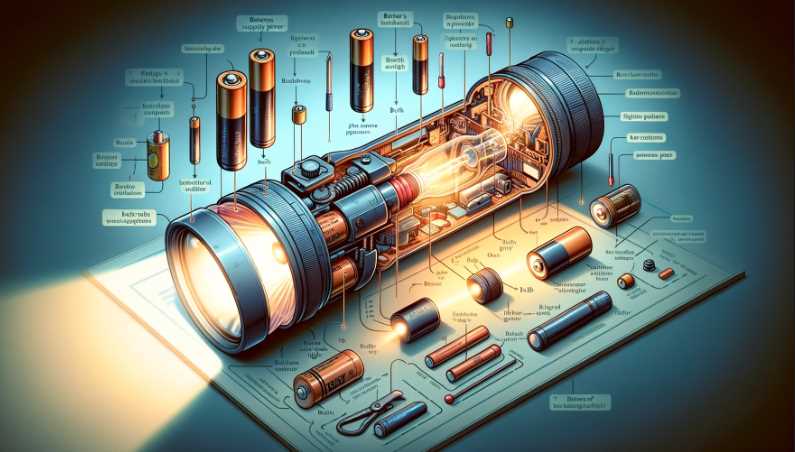
A flashlight consists of several parts that work together to create light. The battery is used to power the LED, and the reflector directs the light where you want it to go. Here are a few more details about how this works:
When you turn on your flashlight, the batteries first start charging up.
This happens because current flows through the circuit when electricity is turned on (known as electromagnetic induction). As soon as enough voltage has been built up, the LED turns on and emits vibrant white light.
The reflector then kicks in and starts reflecting all of this attention onto the light beam from the LED. It does this by using what’s known as an optical illusion – objects look more significant when they’re closer to you and smaller when they’re further away from you.
In other words, by positioning your flashlight near something or someone, you can ensure that their entire body or outline will be brightly illuminated with beams of bright white light!
If the flashlight is shut off accidentally when the contact strips are bodily separated, you can fix this by reconnecting them. To do this, turn on your flashlight and place one of the contact strips against the switch (on top of the battery).
Make sure there is a good connection between the strip and the switch. Then hold down the button until it beeps three times to confirm that electricity has been restored.
How do flashlights work in simple words?
A flashlight is a small device that uses electricity to create a light source. The most common type of flashlight is the battery-powered LED flashlight, which uses disposable or rechargeable batteries. Other flashlights use gas or oil as fuel and include penlight-style lanterns, headlamps, and searchlights.
When you turn on your flashlight, you convert electrical energy into light using either incandescent bulbs or LEDs. This light then travels through a lens (or mirror) to project an image that can be seen nearby by people or animals.
To change the brightness setting, rotate the knob to your desired number (1-10). The higher the number, the brighter the light. To turn on the flashlight, you must press and hold the switch until it clicks into position. And, to dim the morning, you rotate the knob the opposite way! A flashlight emits light through a small incandescent bulb.
How to turn on a flashlight?
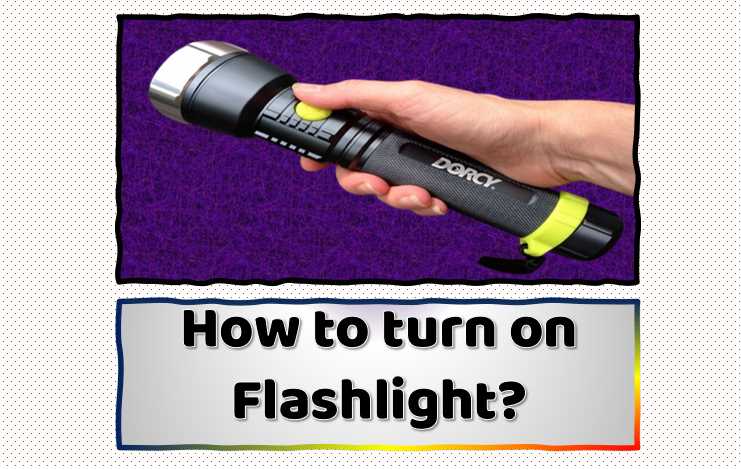
Flashlights can be a lifesaver for emergencies or just for general nighttime use. Most flashlights come with a switch that you press to turn them on. However, if you’re stuck and need help turning your flashlight on, here are some tips:
Get closer to the light- When trying to find something in a dark space, try getting as close to the light source as possible, and this will make it easier for your eyes to adjust and illuminate more of the surrounding area.
Use two hands- If one hand is not enough because of how bright the light is, use both hands together like Gri Gri monkeys! You’ll grip whatever object provides illumination and pull yourself toward this point until you reach it. Once there, release your hold and see what was illuminated inside!
5 Things to avoid while using a flashlight
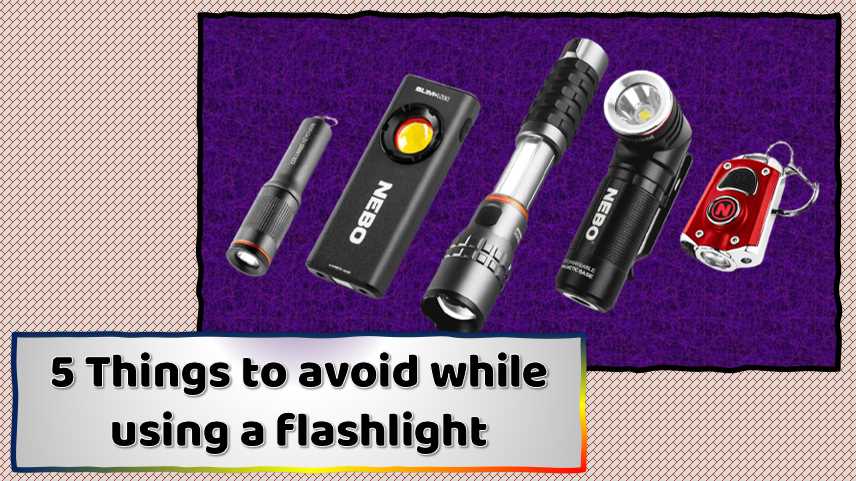
While it may seem handy, using a flashlight can harm your eyes. Here are some things to avoid while using a flashlight:
Using your flashlight while driving or operating machinery is illegal and can cause serious accidents.
Don’t point the light directly into your eyes because this will blind you and might lead to dangerous situations.
Avoid using bright light in an enclosed space like a closet because it will make it difficult to see what’s happening around you.
Only use a flashlight if necessary – don’t use it just for entertainment or to increase productivity at work.
Never shine the light beam towards any person’s face without permission, especially if they are sleeping or otherwise not expecting such luminosity.
How do you use a flashlight?
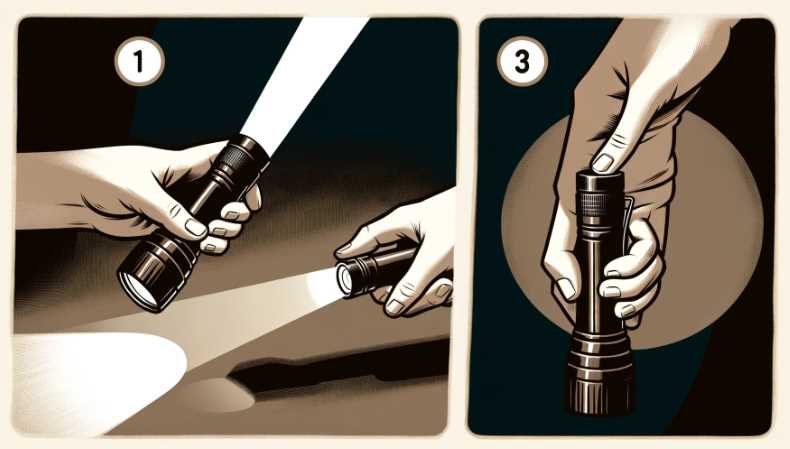
When using a flashlight, you should always keep a few basic rules in mind. Following these simple guidelines will make using a flashlight much more enjoyable and safe for everyone involved.
Use a flashlight when you need it and put it away when you don’t.
Always use a fresh battery in your flashlight – death by a light bulb is no joke!
Keep the flashlight’s beam small to avoid injuring yourself or others with its light.
If using a headlamp, ensure that your hands are well-shielded to avoid getting injured by a bright light shining into your eyes.
Don’t point the light directly at people’s faces – this is especially important when sleeping or unprepared for a bright flashlight.
Why is it important to know how flashlights work?
When the power goes out, you need a flashlight. A flashlight is an essential tool whether you’re an emergency responder or need to see in the dark. And while most of us are familiar with the traditional light bulb flashlight, there are many different types of flashlights, each with unique features and purposes.
What are the two contact strips in a flashlight?
While many flashlights are on the market, two contact strips are typically found in a flashlight. These strips allow you to make direct electrical connections between electrodes and your battery, which provides power to your light. This is useful for emergencies where you need immediate illumination or as an extension of your everyday carry when using portable devices like phones and tablets.
How did electricity start flowing between the two contact strips?
Electricity starts flowing between two contact strips when an electric current is sent through the metal wires. The electric current creates a magnetic field that pulls the rubber or plastic strip toward the magnet. This creates a short circuit between the two contact strips, which powers the light.
Fun Facts about Flashlight
Flashlight use is rising, with over two-thirds of Americans owning a flashlight and one in five using it at least once a day.
According to Statista, an estimated 23 billion flashlights were sold in 2017 globally.
The average American spends $50 per year on flashlight replacement costs.
The average person uses their flashlight 97 times per year.
A typical flashlight lasts 6-9 years, with a 20% chance of surviving ten or more years before needing to be replaced due to battery failure or other issues.
Reflection and refraction INVOLVED in a flashlight
A flashlight works by using meditation and refraction. When you shine a light on something, the light reflects off of that thing and then enters your eye. This is why it’s so important to keep your eyes open while carrying a flashlight – you want as much light as possible to enter your eye.
Reflection also occurs when waves travel through different mediums, like water or air. For example, sound waves traveling through the air are reflected whenever they reach an obstacle like a wall or other surface. This is why it’s often difficult to hear someone speaking indoors – their voice has been reflecting off all the characters for blocks!
Flashlights also use refraction to create a beam of light. When you shine a flashlight towards the ground, some light travels upwards and another downwards. The upward-traveling light is then reflected off objects below it, creating an illuminated pathway. This is what makes your hand glow in the dark!
A Basic Guide to Flashlight Operation
It can be hard to see what’s around you when you’re out in the dark. That’s why having a flashlight is so important! Here are six simple steps on how to operate a flashlight:
1) Ensure your batteries are fully charged and ready to go before using your light.
2) Point the light beam in the direction you want to illuminate.
3) Keep your hand close to the flashlight’s lens for optimum visibility.
4) Always watch your surroundings and beware of potential dangers lurking in the darkness!
5) When finished with use, ensure you turn off your light by rotating it OFF (not just turning it off). Remember: never leave a running or flashing light unattended!
Frequently Asked Questions
How do I change my flashlight?
There are several ways to charge your flashlight; the most popular one is via battery packs. These packs can be bought separately or in sets that include multiple batteries, and they typically have a USB port on them so that you can plug them into your computer or another charging device.
Another way to charge your flashlight is by using solar panels. This option works well if you live in an area with plenty of sunlight, but it may not be suitable for locations without much natural light.
You will need to purchase a solar panel designed explicitly for this purpose and install it in direct sunlight.
If neither of these options works for you, then you could use an AC adapter instead.
What are some tips for using a flashlight safely?
Flashlights can be an excellent tool for personal and professional use, but like most things, they must be handled safely. Here are some tips for using a flashlight safely:
1) Always wear safety goggles when working with a light source; this will protect your eyes from the glare of the light and any debris that may fly up while you’re working.
2) Ensure closed windows or other reflective surfaces properly shield the light. This will help reduce its impact on nearby visibility and minimize potential accidents caused by misplaced sparks.
3) When moving around in confined spaces, keep the light pointed down at ground level so as not to injure someone or damage property overhead (especially if there’s no light shielding).
4) Remember that even small amounts of exposure to artificial lighting during nighttime hours can significantly impair one’s vision. So, try to avoid indoor work whenever possible unless it’s essential!
What are the different types of flashlights?
There are various flashlight types, including traditional flashlights, headlamps, and tactical flashlights.
Traditional flashlights use disposable batteries that need to be replaced periodically.
Headlamps require an electrical outlet and work by projecting a light beam in front of you to see while walking or driving.
Tactical flashlights are designed for military personnel and law enforcement officers. They often come with features like red light bulbs that allow the user to see in low-light conditions.
Final Words
Flashlight knowledge is power! By reading through this comprehensive guide, you can confidently navigate the darkness and take advantage of flashlights’ many benefits. From turning on a flashlight to using it effectively, everything you need to know is covered in detail.
But remember to use caution when using it and always keep a secure place your parents can reach in an emergency.
You should follow these essential safety tips while working with one. If they fail, call for assistance as soon as safely possible. So what are you waiting for? Start learning today, and be prepared for those dark moments when light is the only thing that can help!

I am an enthusiastic student of optics, so I may be biased when I say that optics is one of the most critical fields. It doesn’t matter what type of optics you are talking about – optics for astronomy, medicine, engineering, or pleasure – all types are essential.
Table of Contents
